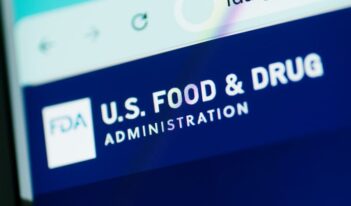
Challenges to branded drugs from generic firms have benefits and costs.
Balancing incentives for innovation and access to medicines is the central policy challenge for pharmaceuticals. The United States, like other industrialized countries, achieves this balance via patents. Patents give branded drug makers the right, for a limited time, to exclude generic firms from the market. Competition from generics after this period generally leads to lower drug costs and improved access to medicines.
The modern system for balancing innovation, prices, and access was established by the Hatch-Waxman Act (Act). Though much has been written about the Act’s effect on generic entry and price dynamics after patent expiration, one of the provisions that was once hardly noticed is now the source of significant controversy: the Act’s patent challenge procedures that allow generic firms to enter the market before all patents have expired.
Patent challenges allow entry prior to patent expiration where a generic drug-maker can show that one or more patents claimed to cover the drug are not infringed by the generic product or should not have been issued by the Patent Office. Such challenges were meant to prevent irrelevant or “low quality” patents from denying consumers the benefits of generic entry. Recognizing that patent litigation is costly, the Act created a bounty for the first successful generic challenger: a six-month exclusivity period shielding them from competition from other generic firms.
Academics, policymakers, and industry representatives have recently expressed concerns that this bounty, which can be quite lucrative for high-selling drugs, has led generic firms to challenge patents indiscriminately on high sales drugs, in hopes of occasionally striking gold. This behavior, sometimes called “prospecting,” has been characterized as a threat to innovation incentives, and even blamed for the pharmaceutical industry’s current productivity crisis.
The empirical evidence suggests these concerns are exaggerated, and, moreover, may miss the point. Scott Hemphill and I recently published a paper in the Journal of Empirical Legal Studies that documents how branded firms have grown increasingly aggressive in patent accumulation over time, particularly in their acquisition of late expiring patents of questionable legal merit. This behavior, which some industry critics call “evergreening,” is associated with an increased likelihood of challenges. In a second paper, in the Journal of Health Economics, we show that the patents that draw challenges are disproportionately low quality, late-expiring ones.
Taken together, the findings from both of these papers suggest that patent challenges have an important role in protecting consumers from harm associated with questionable patents. Challenges harness market incentives to give patents on important drugs a strong second look. This function is particularly important since examiners at the Patent Office lack the resources and incentives to thoroughly evaluate the hundreds of thousands of patent applications they receive annually.
Despite much sound and fury surrounding both prospecting by generic firms and evergreening by brands, their interplay has resulted in something of a stalemate. While both patenting and challenges have increased sharply over the quarter century since Hatch-Waxman, total market exclusivity (the time to first generic entry) has been fairly stable, at about 12 years.
This trend raises several questions. First, is 12 years the right amount of exclusivity to balance the benefits from innovation with those from generic entry? The truth is that we do not know. Despite decades of research on this issue, there is no consensus among economists as to the optimal patent term for new drugs.
A second question is whether the current system is the best way to set the optimal term, whatever the magic number may be. Patent challenges might be a more cost-effective approach to screen out low-quality patents than investing heavily in early review by the Patent Office. The vast majority of granted pharmaceutical patents are associated with drugs that are never approved, and more resources spent examining these patents would likely be wasted.
What happens after the generic manufacturer files a challenge is also important. Some patent suits end in “pay-for-delay” settlements where the branded firm, rather than take a chance of losing its exclusivity by losing the suit, settles the litigation by paying the generic firm to abandon the challenge and delay entry. Unlike most legal settlements, these agreements may create a burden for consumers: a longer period of high prices and reduced access. Previous research suggests that the consumer impact of these settlements will depend crucially on what types of patents are generating settlements, which is the topic of current research.
Generic challenges focus their attention on legally questionable, term-extending patents associated with important drugs. These are exactly the kinds of patents that ought to get a strong second look. But there are other ways to achieve the same end.
One alternative approach worth considering is to subject all patents listed on the Food and Drug Administration’s (FDA) Orange Book, which is a compilation by the FDA of claims by branded firm’s that a patent covers a drug, to immediate re-examination by the Patent Office automatically. Between 2010 and 2011, the FDA listed less than 250 new patents, about one-tenth of one percent of all patents issued over this period. Pharmaceuticals is one of the few industries where such intermediate-stage review of important patents is feasible, given the FDA’s unique role in determining which technologies can go to market, and the requirement that firms identify which patents are associated with these technologies. Re-examination of Orange Book patents provides a promising alternative way to curb evergreening without the cost of litigation and potential for gaming associated with challenges.




